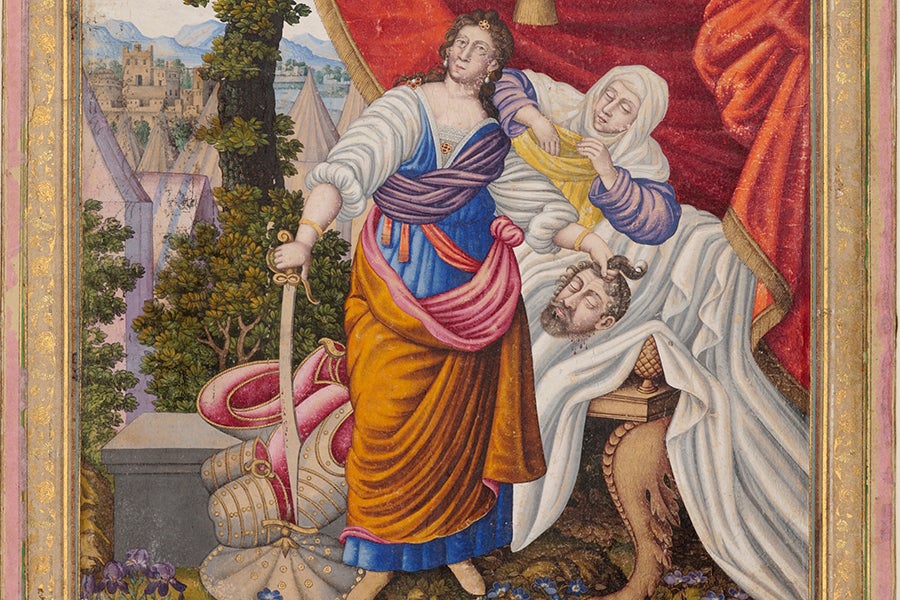The Depiction of European Women in Late Safavid Paintings
Negar Habibi
Synopsis:
This talk presents a group of 17th-century Persian paintings made in the farangi-sazi or Occidentalist style. It focuses in particular on depictions of females whose iconography is of European origins. Inspired by the print medium, some of these compositions recall Persian depictions of Shirin bathing, while others depict biblical saints such as the Virgin Mary. Taken as a collective, these paintings craft a visual form of Occidental exoticism and also provide insights into Iranian perceptions of European subjects and themes during the early modern period.
References:
Habibi, Negar. “From Khazana to Audience: On the Making of New Art in the House of Shah Soleyman.” In Safavid Persia in the Age of Empires, edited by Charles Melville, 217–38. London: I.B. Tauris, 2021. ![]()
Habibi, Negar. “Zan-i Farangi, a Symbol of Occident: The European Women in Farangi Sazi Paintings (1666-94).” In Iran and the West: Cultural Perceptions from the Sasanian Empire to the Islamic Republic, edited by Margaux Whiskin and David Bagot, 225–40. London: I.B. Tauris, 2018. ![]()
Landau, Amy S. “Visibly Foreign, Visibly Female: The Eroticization of Zan-i Farangī in Seventeenth-Century Iranian Painting.” In Eros and Sexuality in Islamic Art, edited by Francesca Leoni and Mika Natif, 99–129. Farnham Surrey, England ; Burlington, VT: Ashgate Publishing Company, 2013. ![]()
Langer, Axel. “European Influence on Seventeenth-Century Persian Painting: Of Handsome Europeans, Naked Ladies, and Parisian Timepieces.” In The Fascination of Persia: Persian-European Dialogue in Seventeenth-Century Art & and Contemporary Art of Tehran, edited by Axel Langer, 170–237. Zurich: Scheidegger and Spiess AG, 2013. ![]()
Matthee, Rudi. “Administrative Stability and Change in Late-17th-Century Iran: The Case of Shaykh Ali Khan Zanganah (1669-89).” International Journal of Middle East Studies 26, no. 1 (1994): 77–98. ![]()
Natif, Mika. Mughal Occidentalism: Artistic Encounters between Europe and Asia at the Courts of India, 1580-1630. Leiden: Brill, 2018. ![]()
Citation:
Negar Habibi, “The Depiction of European Women in Late Safavid Paintings,” Khamseen: Islamic Art History Online, published 9 February 2021.

Negar Habibi is an art historian, lecturer in Islamic and Iranian Art History and Soudavar Foundation fellow at the University of Geneva, Switzerland. Her research focuses principally on paintings from early modern Iran. Adopting a multidisciplinary approach, her academic work centers on the artists’ career and life, the authenticity of their signature, gender issues and artistic patronage. She has published several articles on the art and artists of late seventeenth-century in Iran, and her book titled ʿAli Qoli Jebādār et l’occidentalisme safavide: une étude sur les peintures dites farangi sāzi, leurs milieux et commanditaires sous Shah Soleimān(1666-94) was published by Brill in 2018.


